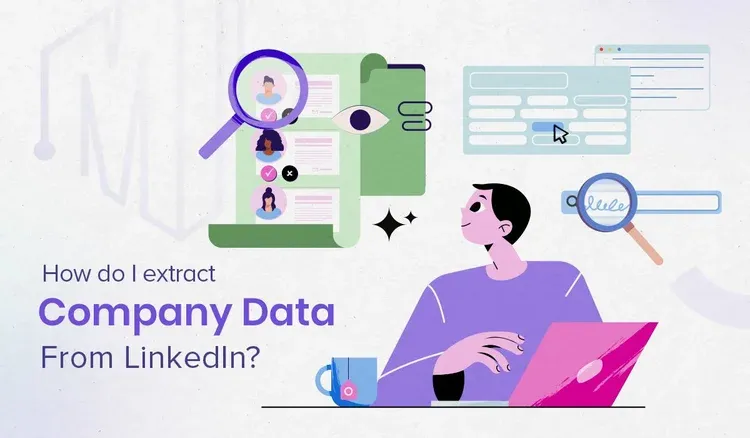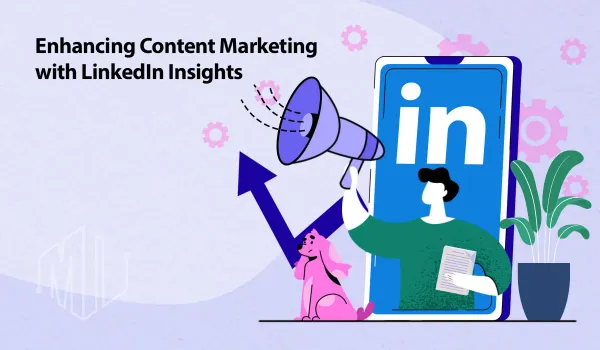How Do I Extract Company Data from LinkedIn?
Given the challenges, turning to automated solutions, especially data extraction or scraping tools, seems logical. These tools can streamline the extraction process, helping recruiters gather data more efficiently.

LinkedIn, the world's leading professional network, houses an immense wealth of company information, making it an indispensable tool for recruiters, business analysts, and corporate spies alike. The challenge, however, lies in efficiently extracting this data.
When it comes to recruiters, the intricacies deepen, given the highly dynamic nature of job markets and the rigorous demands of talent acquisition.
✨ Unleash the Power of AI with MagicalAPI!
Whether you’re optimizing YouTube content, extracting LinkedIn data, or evaluating resumes, MagicalAPI is your one-stop solution! Discover the diverse range of AI services tailored to meet your every need. Dive in and elevate your digital experience today!

What is data extraction?
Data extraction is the process of collecting, retrieving, and organizing specific information from diverse sources. In the business realm, this often pertains to the extraction of valuable business data from various digital documents, websites, databases, and other platforms. One common application of this process is to extract company data.
For instance, a company might want to extract sales figures from an internal report, or perhaps gather data about a competitor's product lineup from their website. Consider a simple example: a new startup looking to enter the market might extract company data of its potential competitors to understand their product range, pricing, and customer reviews. This business data, once extracted, can provide crucial insights and inform strategic decisions, ensuring that companies remain agile and responsive in a rapidly changing market environment.
What is ETL and How Does the Data Extraction Process Work?
ETL stands for Extract, Transform, and Load, a three-step procedure critical for businesses aiming to consolidate their vast arrays of business data into a unified system. Initially, businesses "extract" company data from various sources, be it from spreadsheets, databases, or cloud applications.
This data might be raw and unstructured, and hence the next step is to "transform" it. This transformation ensures the business data is cleaned, enriched, and made consistent. Once this is done, the final step is to "load" this refined data into a central repository, typically known as a data warehouse.
To put it succinctly, in the data extraction process, organizations pull out vital information, refine it, and then store it systematically.
The ETL process, especially the extract company data stage, plays a pivotal role in ensuring that businesses can access consolidated, accurate, and actionable insights from their reservoirs of data.
The Challenges Faced by Recruiters
In the realm of recruitment, LinkedIn has been nothing short of revolutionary. Yet, the very benefits it offers come with their own set of complexities:
- Volume of Data: With millions of profiles, posts, and company pages, sifting through to find relevant candidates or company data is akin to finding a needle in a haystack.
- Dynamic Data: A potential candidate’s status can change overnight. They might get a new job, acquire a new skill, or shift to a different location. Keeping track of such dynamic data manually is nearly impossible.
- Competitive Monitoring: In today's cut-throat job market, it's not just about finding the right candidate but also about outpacing competing recruiters. Monitoring competitor activity on LinkedIn is crucial but tremendously challenging.
The Power of LinkedIn's Company Pages
Every major organization has a LinkedIn Company Page, a hub of essential details such as company size, history, industry domain, and more. But beyond the static data, these pages offer a glimpse into a company’s dynamism:
- Job Postings: These indicate hiring trends and growth trajectories.
- Company Updates: They reflect company achievements, goals, and cultural highlights.
- Employee Movements: Monitoring key personnel joining or leaving can provide insights into internal shifts and changes.

Monitoring Competitors on LinkedIn:
Solutions
For recruiters and businesses, keeping an eagle's eye on competitors' activities is imperative. Here are some tailored solutions to help monitor and even outpace competitors on LinkedIn:
- Tailored Alerts: LinkedIn allows you to set up alerts for specific companies. By doing so, you can receive notifications on new job postings, company updates, and more.
- Advanced Search & Boolean Logic: Utilize LinkedIn’s advanced search feature, coupled with Boolean logic, to pinpoint specific data. For instance, you could search for employees who've recently joined a competitor, hinting at the roles they might be focusing on.
- Engage with Content: Regularly engage with competitors' posts. It's not about espionage but understanding their ethos, culture, and strategies. Comments, likes, and shared posts can often reveal insights about internal company strategies and priorities.
- Join Relevant Groups: Many professionals and companies have specific groups where discussions, job postings, and news are shared. Being an active member can offer firsthand insights into what competitors might be seeking or discussing.
The Role of Automated Tools
Given the challenges, turning to automated solutions, especially data extraction or scraping tools, seems logical. These tools can streamline the extraction process, helping recruiters gather data more efficiently.
A word of caution: While automation offers efficiency, LinkedIn's terms of service explicitly mention restrictions against unauthorized scraping. Hence, it's crucial to ensure any tool or method employed aligns with platform guidelines and legal stipulations.
Personalized Outreach: Beyond Just Data Extraction
While data is power, personalization is key, especially in recruitment. Even as you extract company data, always aim to personalize outreach. Use the insights gained not just to approach potential candidates or companies but to build genuine, value-driven relationships. Remember, LinkedIn is not just a data mine, but a network built on trust, professionalism, and mutual growth.
Conclusion
While LinkedIn is a public platform, the line between public information and privacy can sometimes blur. Always ensure the data you extract is used ethically and respects the privacy of individuals and companies. It's not just about adhering to regulations but also about maintaining the trust and professionalism that LinkedIn stands for.
In conclusion, whether manually or with the aid of tools, extracting company data from LinkedIn requires a mix of technology, strategy, and ethics. Done right, it can open doors to unparalleled business insights and opportunities.
FAQ
- What is LinkedIn data extraction?
LinkedIn data extraction involves collecting and organizing specific information from LinkedIn profiles, company pages, and other LinkedIn data points. - Why should I extract company data from LinkedIn?
Extracting company data from LinkedIn can provide insights into competitors, help identify potential clients, and support recruitment efforts by providing detailed information about companies and their employees. This data can be used to enhance targeted marketing campaigns and improve business strategies.

Join to our community
By joining our Discord server, get assistance, and troubleshoot any challenges you may encounter while using our services.
Join us on Discord




